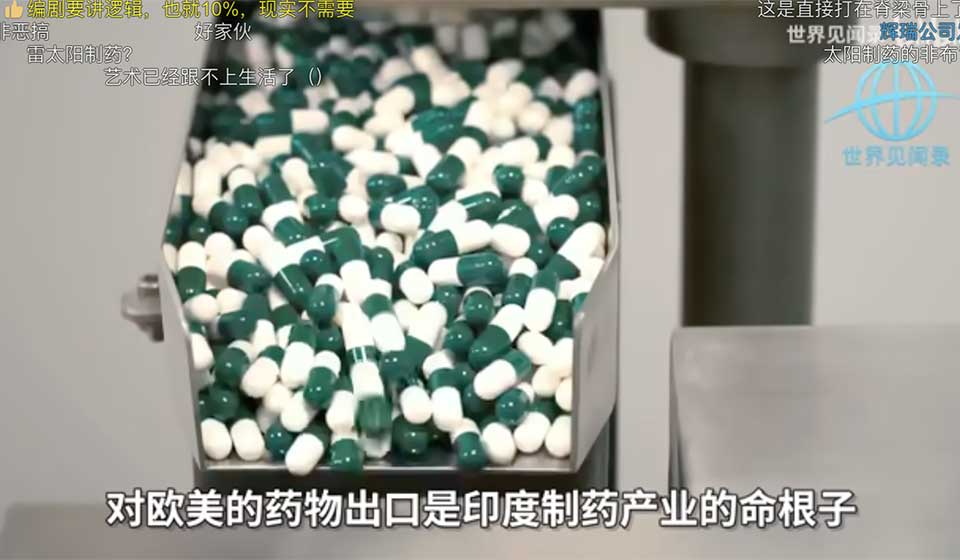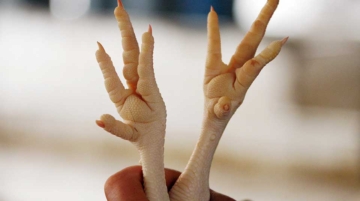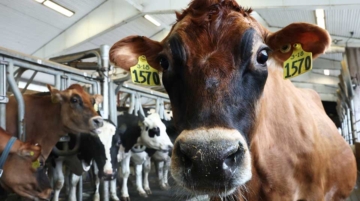
For decades, the U.S. and India have appeared aligned in biotechnology. But Chinese commentators and policy analysts alike now point to a paradox: Trump’s new tariff plan, designed to push Indian drugmakers into relocating production to U.S. soil, adds fresh uncertainty and risk to what was supposed to be a stable partnership built to counter China’s biotech rise.
A commentator on video platform Bilibili noted that the Trump administration’s April 2025 tariff package has shaken India’s pharmaceutical industry—the country’s lifeline export sector. Pharma stocks such as Lupin, Dr. Reddy’s, and Sun Pharma plummeted after the announcement. In 2024 alone, India exported $21.7 billion in pharmaceuticals to the U.S., with generics accounting for 83%. While Trump offered an 18-month adjustment period, tariffs are set to escalate, potentially reaching 200%, a blow that targets India’s soft underbelly.
The commentator recalled how India’s 1970 Patent Act allowed domestic companies to bypass Western product patents by modifying manufacturing processes, laying the foundation for its generics empire. Indian drugs became indispensable in the U.S., often hailed as “lifeline medicines for the poor.” But this dependence came at a cost: India became a hub for risky clinical trials, where vulnerable populations bore the consequences of adverse effects in partnerships with Western firms.
Trump’s tariffs, the commentator argued, are less about punishing India and more about coercing its companies to shift production to the U.S.—a costly and time-consuming move that Sun Pharma, Dr. Reddy’s, and Lupin have already begun. For Indian firms, this relocation threatens profits and stretches timelines, making survival uncertain under a compressed adjustment window.
Meanwhile, a policy think tank in Shanghai highlighted that biotechnology has become a centerpiece of the U.S.–India strategic cooperation, framed through initiatives like the Critical and Emerging Technology Initiative (iCET), the Quad, the Bio-5 supply chain framework, and the Bio-X collaboration scheme. The alliance is built on shared ambition: Washington seeks to curb China’s growing weight in generics, APIs, and contract R&D; New Delhi aims to move up the global biotech value chain and reduce reliance on Chinese raw materials.
But three deep constraints undercut the alliance. First, “de-Sinicization” is unrealistic: China remains the world’s largest API producer, supplying ~30% of global output. India and the U.S. are its top buyers, and U.S. imports of Chinese drugs have surged 485% since 2020. Second, strategic priorities diverge: the U.S. treats biotech as a pillar of geopolitical hegemony, while India sees it as an economic development tool with a $150 billion “bio-economy” target by 2025. Finally, frictions over intellectual property and drug quality persist: Washington frequently criticizes India’s weak IP enforcement and repeated quality scandals in its generics sector. Cases like the FDA’s shutdown of Intas Pharmaceuticals—whose anticancer drugs dominated the U.S. market—exposed how Indian production failures could trigger domestic shortages, even forcing Washington to turn back to China for supply.
The result is a paradox: the U.S. and India may appear aligned against China, but their alliance rests on fragile, even conflicting foundations.
Why Is This Important?
Biotechnology has become one of the most consequential battlegrounds in global power politics. The U.S. hopes to cement its technological dominance; India seeks industrial ascent; and China already anchors much of the world’s pharma supply chain. Trump’s tariff gambit exposes just how conditional and unstable the U.S.–India partnership really is. Instead of a seamless front against China, the two countries face a future of uneasy cooperation, riddled with asymmetry, mistrust, and the risk of strategic miscalculation.







